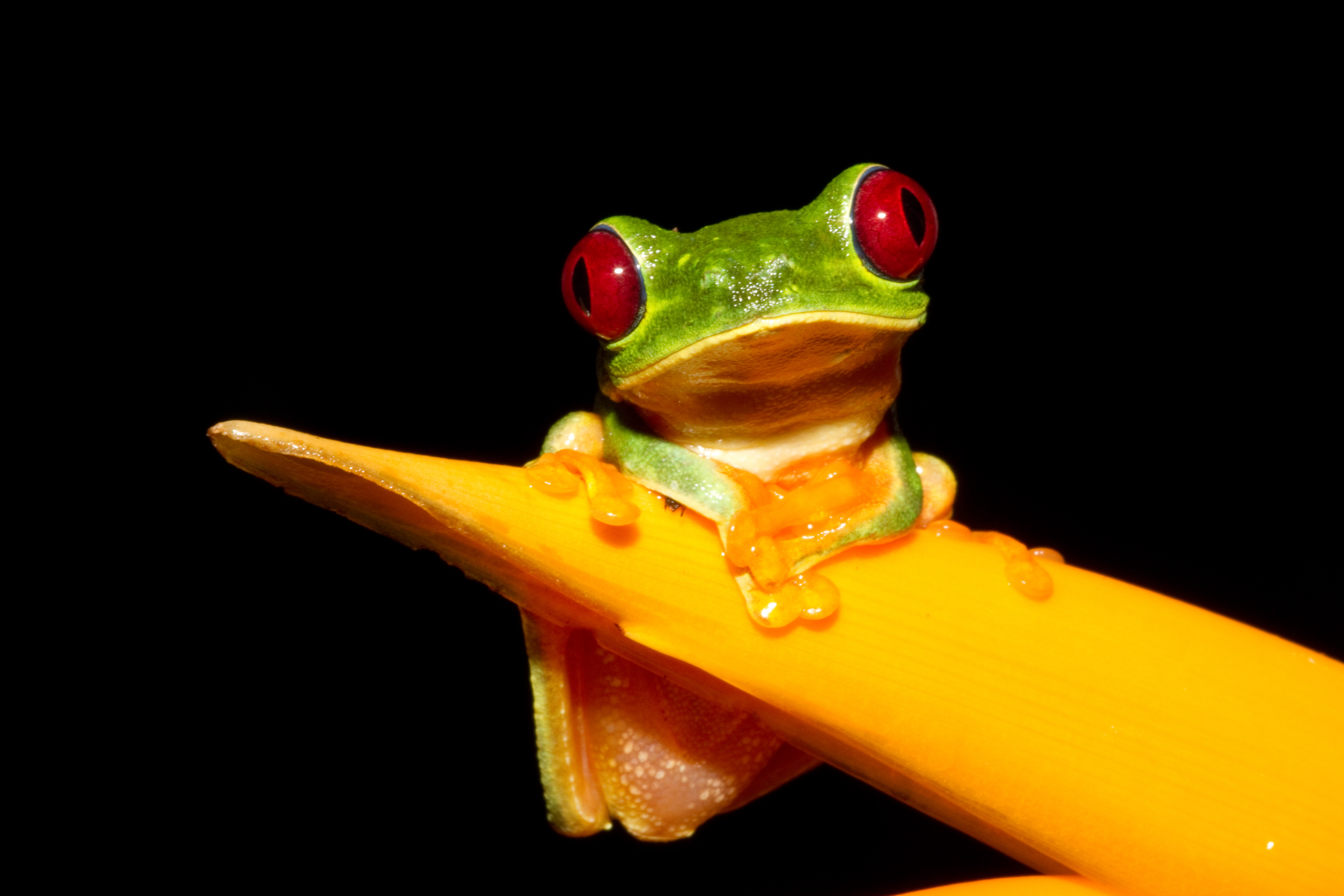Research team explores how microbial diversity defends against disease

Amphibians are among the most threatened creatures on earth, with some 40 percent of amphibian species threatened or endangered. One of their primary threats is a rapidly spreading disease that attacks the skin cells of amphibians. "Chytridiomycosis, a fungal disease, has been a key factor in the extinctions of many species of frogs around the world," said Lisa Belden, associate professor of biological sciences in the College of Science at Virginia Tech.
Belden is leading a team of researchers from Virginia Tech, James Madison University, Villanova University, and the Smithsonian Institution who will study the microbial communities living on the skins of frogs that are surviving the fungal scourge. The effort is one of 11 new Dimensions of Biodiversity projects funded by the National Science Foundation (NSF) with the aim of transforming, by 2020, "how scientists describe and understand the scope and role of life on earth," according to an NSF news release.
For Belden's team, the lofty goals will be achieved through hands on work in Panama, where the spread of chytrid fungus has been extensively documented. Researchers will swab the skin of frogs in areas with and without chytrid to collect samples of the microbes that live there. They will then release the frogs and assess the microbial community, both in terms of what microbes are there and what they are doing functionally on the skin. To see what microbes are there, researchers will examine their DNA. To see what the microbes are doing, researchers will examine how well they inhibit the growth of the chytrid fungus, and also assess what chemical metabolites are being produced by the microbes. "We expect that in the presence of chytrid fungus, there will be strong selection for the bacteria to produce anti-chytrid fungus metabolites, regardless of what bacterial species are present on the skin," said Belden.
It is all about appreciating the diverse roles of microbes, Belden said. "We are used to equating microbes with germs that make us sick, but, in fact, many microbes are critical to health. Healthy humans, for instance, carry around about 3 pounds of microbes, largely in our guts. These microbes help us absorb our food, break down toxins, and prevent pathogens from gaining a foothold."
Belden's team is interested in whether microbial communities on the skin of frogs have a role in disease resistance, in particular to the devastating chytrid fungus. And if there is such immunity, does it rely on the same mechanism from one frog to another, on different species of frogs, and in different locations?
"Our long-term goal is to try to develop probiotics" – to share the biochemistry employed by beneficial microbes with frogs who need it, she said.
To advance that goal, Belden's team is working with Brian Gratwicke, a research biologist at the Smithsonian Conservation Biology Institute, and Roberto Ibáñez, a scientist at the Smithsonian Tropical Research Institute. As leaders of the Panama Amphibian Rescue and Conservation Project, they are maintaining captive colonies of endangered Panamanian frogs that are highly susceptible to the chytrid fungus. The hope is that the use of probiotics will someday allow release some of these species back into nature.
Members of the $2 million research project led by Belden are Virginia Tech colleagues Leanna House, assistant professor of statistics, and Roderick Jensen, professor of biological sciences; Reid Harris, professor of biology at James Madison University; Kevin Minbiole, assistant professor of organic and natural products chemistry at Villanova University; and the Smithsonian Institute scientists, Gratwicke and Ibáñez.
Jensen will guide the synthesis of the large amount of DNA sequence data that will be produced by the project, and House will develop new statistical methods to capture and analyze information from the DNA and metabolite datasets. "The bioinformatics and statistical analysis portions of the work are critical and provide the framework for advancing our knowledge in this system and also applying our findings to our systems," said Belden.
Minbiole has identified key antifungal metabolites from amphibians' skin bacteria. He will be doing the research on the metabolites the new project identifies. Harris, an ecologist, conducted the original experiments showing that amphibians' skin microbes are important in resisting chytrid fungus and will be involved with ecological surveys and experimental manipulations of the Panamanian frogs' microbes.
Belden is affiliated with the Fralin Life Science Institute at Virginia Tech, which strategically invests in targeted research areas within the life sciences. Research initiatives receiving the highest priority for support include vector-borne disease, infectious disease and microbial sciences, plant sciences, ecology and organismal biology, obesity, and cancer biology.




